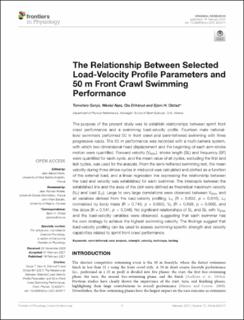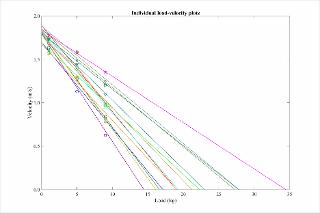| dc.contributor.author | Gonjo, Tomohiro | |
| dc.contributor.author | Njøs, Nikolai | |
| dc.contributor.author | Eriksrud, Ola | |
| dc.contributor.author | Olstad, Bjørn Harald | |
| dc.date.accessioned | 2022-03-21T22:04:56Z | |
| dc.date.available | 2022-03-21T22:04:56Z | |
| dc.date.created | 2021-06-16T16:51:14Z | |
| dc.date.issued | 2021 | |
| dc.identifier.citation | Frontiers in Physiology. 2021, 12, Artikkel 625411. | en_US |
| dc.identifier.issn | 1664-042X | |
| dc.identifier.uri | https://hdl.handle.net/11250/2986644 | |
| dc.description | This is an open-access article distributed under the terms of the Creative Commons Attribution License (CC BY). The use, distribution or reproduction in other forums is permitted, provided the original author(s) and the copyright owner(s) are credited and that the original publication in this journal is cited, in accordance with accepted academic practice. No use, distribution or reproduction is permitted which does not comply with these terms. | en_US |
| dc.description.abstract | The purpose of the present study was to establish relationships between sprint front crawl performance and a swimming load-velocity profile. Fourteen male national-level swimmers performed 50 m front crawl and semi-tethered swimming with three progressive loads. The 50 m performance was recorded with a multi-camera system, with which two-dimensional head displacement and the beginning of each arm-stroke motion were quantified. Forward velocity (V50m), stroke length (SL) and frequency (SF) were quantified for each cycle, and the mean value of all cycles, excluding the first and last cycles, was used for the analysis. From the semi-tethered swimming test, the mean velocity during three stroke cycles in mid-pool was calculated and plotted as a function of the external load, and a linear regression line expressing the relationship between the load and velocity was established for each swimmer. The intercepts between the established line and the axes of the plot were defined as theoretical maximum velocity (V0) and load (L0). Large to very large correlations were observed between V50m and all variables derived from the load-velocity profiling; L0 (R = 0.632, p = 0.015), L0 normalized by body mass (R = 0.743, p = 0.002), V0 (R = 0.698, p = 0.006), and the slope (R = 0.541, p < 0.046). No significant relationships of SL and SL with V50m and the load-velocity variables were observed, suggesting that each swimmer has his own strategy to achieve the highest swimming velocity. The findings suggest that load-velocity profiling can be used to assess swimming-specific strength and velocity capabilities related to sprint front crawl performance. | en_US |
| dc.language.iso | eng | en_US |
| dc.subject | race analysis | en_US |
| dc.subject | semi-tethered | en_US |
| dc.subject | strength | en_US |
| dc.subject | technique | en_US |
| dc.subject | testing | en_US |
| dc.subject | velocity | en_US |
| dc.title | The relationship between selected load-velocity profile parameters and 50 m front crawl swimming performance | en_US |
| dc.type | Peer reviewed | en_US |
| dc.type | Journal article | en_US |
| dc.description.version | publishedVersion | en_US |
| dc.rights.holder | © 2021 Gonjo, Njøs, Eriksrud and Olstad | en_US |
| dc.source.pagenumber | 10 | en_US |
| dc.source.volume | 12 | en_US |
| dc.source.journal | Frontiers in Physiology | en_US |
| dc.identifier.doi | 10.3389/fphys.2021.625411 | |
| dc.identifier.cristin | 1916241 | |
| dc.description.localcode | Institutt for fysisk prestasjonsevne / Department of Physical Performance | en_US |
| dc.source.articlenumber | 625411 | en_US |
| cristin.ispublished | true | |
| cristin.fulltext | original | |
| cristin.qualitycode | 1 | |

